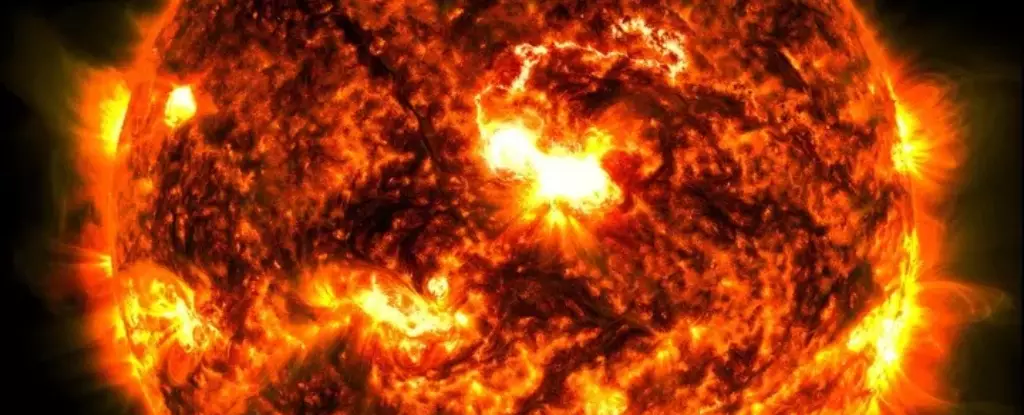As our Sun continues its 11-year cycle of activity, a remarkable event is upon us. The solar dynamics in play can be both mesmerizing and disruptive. The forecast warns of a significant coronal mass ejection (CME) heading toward Earth, projected to arrive on Thursday morning. This massive ball of plasma, accompanied by its formidable magnetic field, has the potential to trigger stunning auroras, brightening night skies even in regions as far south as Alabama. The heightened anticipation among scientists and astrophysicists speaks to the thrills and dangers that solar phenomena bring to our planet.
Coronal mass ejections originate from the Sun and are characterized by large expulsions of plasma and magnetic field. When these fast-moving energy bursts travel through space, they can reach staggering speeds of around 2.5 million miles per hour. As they collide with Earth’s magnetosphere, the interaction stirs geomagnetic storms, which can have varied repercussions on technology and natural phenomena alike.
The upcoming CME, which erupted on October 8, has been closely monitored by the Space Weather Prediction Center. Meteorologists describe the forthcoming storm as a level 4 geomagnetic event (G4), denoting a potentially intense disruption that could influence satellite operations, radio communications, and GPS accuracy. While this level is one tier beneath the most extreme (G5), the dynamics of such storms are notoriously unpredictable until shortly before their arrival.
Historical Context and Potential Implications
Looking back, we can see how previous geomagnetic storms have unleashed chaos along with beauty. For example, the “Halloween Storms” of October 2003 not only provided a visual spectacle but also wreaked havoc on power grids, causing blackouts in Sweden and damaging infrastructure in South Africa. Similarly, May’s solar storms managed to disrupt precision in GPS systems used by farmers in the Midwest, prompting operators to initiate emergency protocols.
Preparation and quick responses are vital. As the Federal Emergency Management Agency (FEMA) mobilizes to manage simultaneous challenges, including the aftermath of Hurricane Helene, there’s an added layer of complexity with the incoming solar storm. Essential industries and services that rely on uninterrupted power and communication—like those maintaining the North American power grid—must remain on high alert, as even nuanced fluctuations in solar activity could necessitate preventive measures.
Viewing the Aurora: What to Expect
For the astronomy enthusiasts and casual skywatchers alike, the anticipation of auroral activity should not be understated. Regions that would normally never see the awe-inspiring northern lights could find themselves under a vibrant celestial display, potentially extending as far south as northern California and Alabama. It is advised that would-be aurora watchers seek out dark skies, away from city lights, to fully appreciate the breathtaking colors and patterns that could grace their night skies.
Today’s technology provides an unprecedented opportunity to capture these ephemeral moments. Digital cameras and smartphones are equipped to detect colors and movements often invisible to the naked eye, expanding accessibility to those fortunate enough to be in the right location.
In light of this extraordinary solar occurrence, the need for public awareness grows. As the scientific community braces for the potential impact of the CME, citizens are encouraged to educate themselves about the effects that solar storms can have—not just on the natural environment, but on the technological systems that underpin modern society.
The effects of geomagnetic storms can be far-reaching, affecting communications, satellite navigation, and even power supplies. Understanding these phenomena and encouraging predictive measures can help society better cope with the challenges posed by our sun’s violent outbursts. As we stand at the brink of this cosmic event, let us embrace both the beauty and unpredictability that our solar system presents. By fostering informed awareness, we can not only enjoy the best aspects of such events but also mitigate the risks they pose.


Leave a Reply